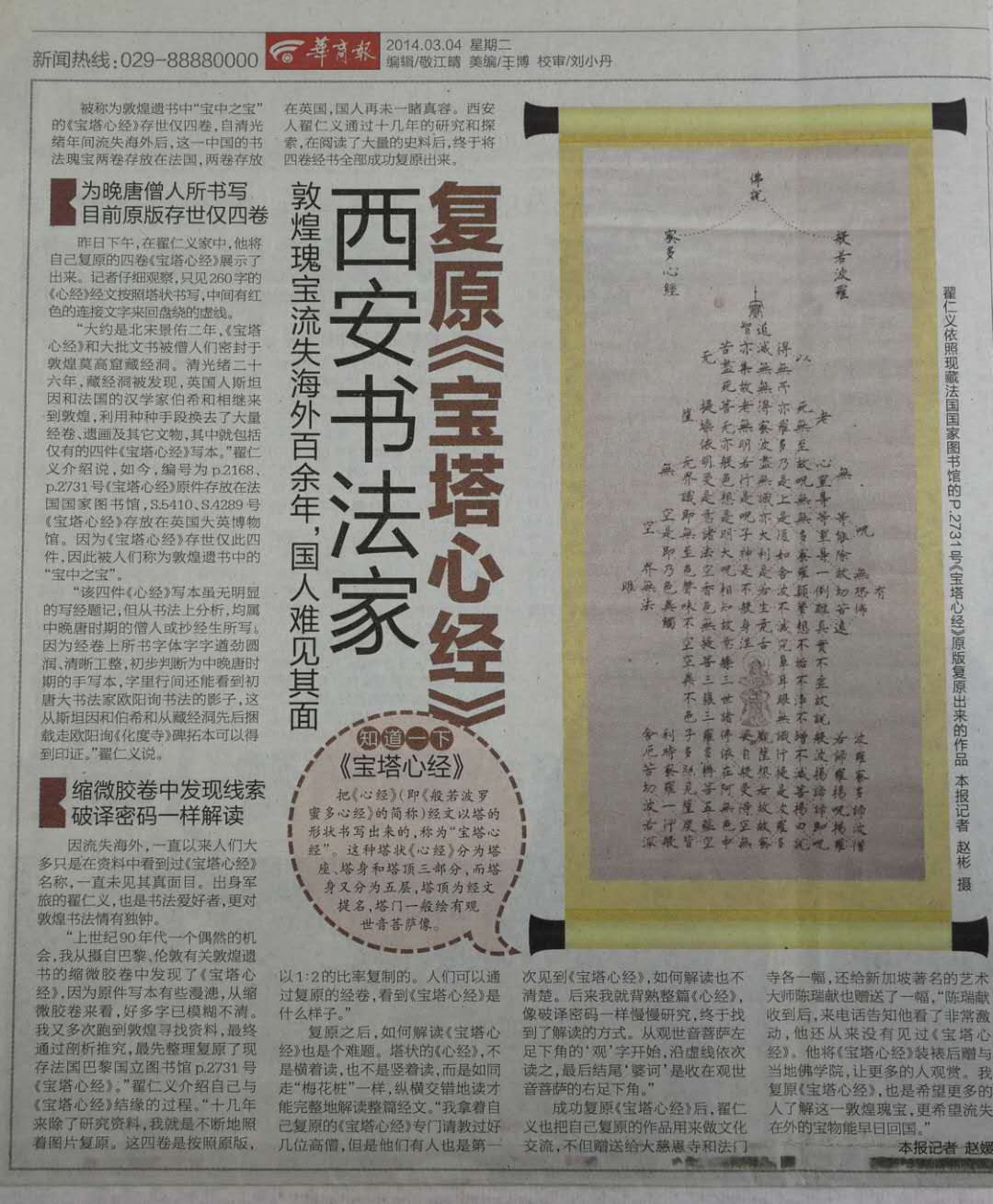Zhai Renyi
Zhai Renyi
Personal Profile
Zhai Renyi was born in 1951 in Shaanxi's Weinan and graduated from Xi'an International Studies University. He is currently the Executive President of the Shaanxi Branch of the China Research Association for Poetry, Calligraphy, and Painting, and Director of the Xi'an Yiwen Calligraphy and Painting Academy. He specializes in regular, running, and cursive script, and has also studied various other scripts and calligraphic theory. His works have been selected and awarded in numerous domestic and international calligraphy and painting exhibitions. In 2015, his calligraphy pieces were exhibited and exchanged at the Art Gallery of the Diaoyutai Villa and the Diaoyutai State Guesthouse in Beijing. His calligraphy and painting work, "Pagoda Heart Sutra," was selected for exhibition at the Special Exhibition of Chinese Cultural and Art Works during the 2015 Milan Expo China Cultural Arts Festival. Several of his calligraphy works are collected by the "Chinese Cultural Art Palace" in the United States, the "Society for the History of Sports" in Japan, and the Singapore Buddhist College. His calligraphy works, theoretical articles, and related personal interviews have appeared in Gansu Television, Hong Kong's "Mingjia" Magazine, and various provincial and national newspapers and periodicals. He is proficient in English and Russian translation, and has translated and published books such as America's "Modern Life and Time Management," Russia's "The Strange Code" and "Comprehensive Guide to Sports Medicine."
Since childhood, he has been passionate about calligraphy and has practiced copying ancient models for decades, extensively studying various styles and gradually developing his own distinctive calligraphic style. In the 1990s, he successfully reconstructed four copies of the Pagoda Heart Sutra from microfilm reels taken in Paris and London that contained Dunhuang manuscripts, allowing this national treasure of Dunhuang to be seen by the Chinese public once again after a millennium. The Pagoda Heart Sutra refers to a Tang Dynasty Dunhuang monk who wrote the Heart Sutra in the shape of a pagoda, consisting of three parts: the base, body, and crown. The crown bears the title of the sutra, while the entrance features an image of Avalokiteshvara Bodhisattva. To read the Pagoda Heart Sutra, one begins with the character "Guan" (观) at the lower left corner beneath Avalokiteshvara’s left foot and follows the dotted line sequentially. This dotted-line structure symbolizes the progressive stages of monastic practice at the time. The reconstructed Pagoda Heart Sutra manuscripts have since been collected by renowned temples such as Daci’en Temple, Famen Temple, and Longquan Chan Temple, as well as numerous friends both at home and abroad. The original manuscript of the Pagoda Heart Sutra remains lost overseas, and there is hope that this Dunhuang treasure will return to China soon.
Since childhood, he has been passionate about calligraphy and has practiced copying ancient models for decades, extensively studying various styles and gradually developing his own distinctive calligraphic style. In the 1990s, he successfully reconstructed four copies of the Pagoda Heart Sutra from microfilm reels taken in Paris and London that contained Dunhuang manuscripts, allowing this national treasure of Dunhuang to be seen by the Chinese public once again after a millennium. The Pagoda Heart Sutra refers to a Tang Dynasty Dunhuang monk who wrote the Heart Sutra in the shape of a pagoda, consisting of three parts: the base, body, and crown. The crown bears the title of the sutra, while the entrance features an image of Avalokiteshvara Bodhisattva. To read the Pagoda Heart Sutra, one begins with the character "Guan" (观) at the lower left corner beneath Avalokiteshvara’s left foot and follows the dotted line sequentially. This dotted-line structure symbolizes the progressive stages of monastic practice at the time. The reconstructed Pagoda Heart Sutra manuscripts have since been collected by renowned temples such as Daci’en Temple, Famen Temple, and Longquan Chan Temple, as well as numerous friends both at home and abroad. The original manuscript of the Pagoda Heart Sutra remains lost overseas, and there is hope that this Dunhuang treasure will return to China soon.

para-title
TAG:
Zhai Renyi

 中文
中文  en
en 
